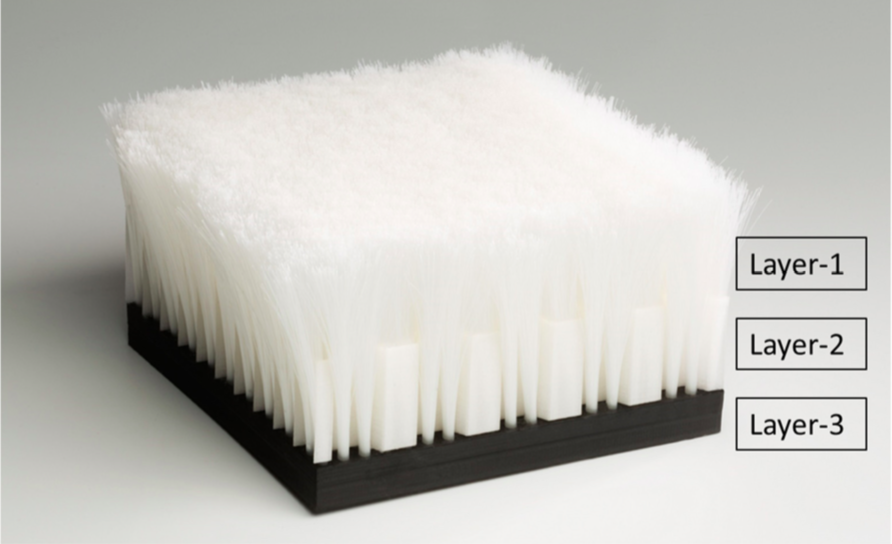
AN engineer has used his passion for biomimicry to create a new type of home insulation inspired by the technical properties of polar bear skin and fur.
Lindey Cafsia told Project Scotland how he combined his studies in construction with his love for animals to come up with Plyskin – an insulation concept which mimics the technical structures of polar bear fur.
Made from recyclable polyamide, the outer layer is a white fur-type material with the ‘hairs’ of the fur capturing stationary air due to it being translucent. Below this layer is a structure which absorbs part of the heat radiation and the final part is a black, hollow layer which acts as a heat buffer.
Polar bear fur has a similar set up of three layers, with the first obviously being the fur, then the skin which absorbs the heat of the sun, and finally a layer of blubber which acts as insulation.
“To be a good practitioner of biomimicry you have to change the way of doing things,” Lindey explained. “See that you have to change your perception and the way you look at your environment and your relationship with it. You have to be aware of your position and the relationship with other organisms on earth. And see that your actions and the results have to be conducive to life.”
The insulation is fitted to the outside of the building rather than inside the structure. Lindey added, “Plyskin is a unique concept where the façade is covered with furry material. This gives the building a new and different look in comparison with all existing types of facades. The façade not only has an impressive visual appearance but has also a tactile value which can be attractive and appealing to humans.”
Lindey told of the psychological benefits that such biomorphic designs can allow for, citing a document published in 2014 by Terrapin Bright Green. In the document, the relationships between nature, human biology and the design of built environment is detailed. The biophlic hypothesis suggests that humans possess an innate tendency to seek connections with nature.
Lindey said that appearance and materials used for Plyskin can be ‘related’ to the biomorphic forms and patterns, with the furry material ‘symbolising’ a connection with nature – thus allowing for it to a biophilic effect on humans.
Referring to the physical benefit the outer material also offers, Lindey continued, “Because of the hairy structure of Plyskin, it is possible to slow down the runoff of rainwater, helping to slow down rainwater in heavy rain showers. Traditional buildings are designed to get rainwater as fast as possible to the drain, which in case of heavy rain shower makes chances of floods bigger. Just like a green façade, this characteristic also helps cooling down the building (or prevent the façade from heating up). This would help to reduce the urban heat island.”
The engineer is now seeking out partners to proof concept Plyskin, having not yet fully launched it. He said the ideal scenario would be for it to be part of an exhibition so that realtime data of the performance can be collected. With it being made of bio-based materials, it certainly fits in with the trend of an eco-friendly society. Soon, ‘furry’ buildings could very well be a reality.











